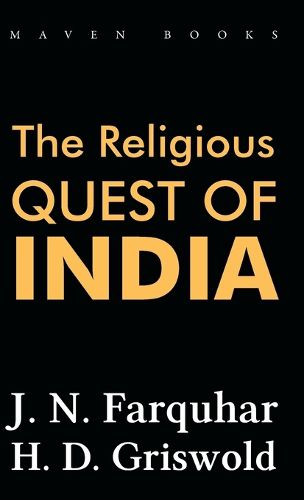Readings Newsletter
Become a Readings Member to make your shopping experience even easier.
Sign in or sign up for free!
You’re not far away from qualifying for FREE standard shipping within Australia
You’ve qualified for FREE standard shipping within Australia
The cart is loading…






This title is printed to order. This book may have been self-published. If so, we cannot guarantee the quality of the content. In the main most books will have gone through the editing process however some may not. We therefore suggest that you be aware of this before ordering this book. If in doubt check either the author or publisher’s details as we are unable to accept any returns unless they are faulty. Please contact us if you have any questions.
This historic book may have numerous typos and missing text. Purchasers can download a free scanned copy of the original book (without typos) from the publisher. Not indexed. Not illustrated. 1920 edition. Excerpt: ...the pot were uncovered, some one might burn his hands in it, and if by chance a piece of burnt skin fell in the pot, the fire would become as unholy as the fire that burns a dead man!) But this covered fire that is brought is holy, and is called the Pavaka or sanctifier.1 Sandal-wood paste is sprinkled on the edge of the altar and on the fire itself, and flowers are put beside it. Next, three blades of darbha-grass dipped in clarified butter are thrown into the fire, and water is poured round it. At this point the worshipper stops for a moment and meditates on Agni, who has four horns, three legs, two heads, and seven hands, and then he again offers sandal-wood paste and flowers to the fire. Rice is now ordered from the kitchen, and the worshipper sprinkles water over the rice and sanctifies it by repeating mentally the gayatri mantra, and then pouring over it clarified butter. Out of this rice the worshipper proceeds to make five little balls, each the size of a marble. The first is offered to Brahma, and as the worshipper casts it into the fire, he says: 1 It maybe interesting here to note the names of the other fires that we have either studied already or shall later study. The fire at sraddha is called the Aditi, the mother of gods and the aunt of the demons; the marriage fire is the Yojaka, the uniter; the fire lit at a house-warming is the Satamaiigala, the bringer of hundreds of auspicious things; the fire lit at the funeral pyre is the Kravydd, the eater of human flesh; and the fire lit to propitiate the planets is the Varada, the fulfiller of desire. 'Brahmane Svdhd and then: 'This is for his sake and not for mine'. The remaining four balls are successively offered in the same way to Prajdpati, to Grihyd (the goddess who guards the...
$9.00 standard shipping within Australia
FREE standard shipping within Australia for orders over $100.00
Express & International shipping calculated at checkout
This title is printed to order. This book may have been self-published. If so, we cannot guarantee the quality of the content. In the main most books will have gone through the editing process however some may not. We therefore suggest that you be aware of this before ordering this book. If in doubt check either the author or publisher’s details as we are unable to accept any returns unless they are faulty. Please contact us if you have any questions.
This historic book may have numerous typos and missing text. Purchasers can download a free scanned copy of the original book (without typos) from the publisher. Not indexed. Not illustrated. 1920 edition. Excerpt: ...the pot were uncovered, some one might burn his hands in it, and if by chance a piece of burnt skin fell in the pot, the fire would become as unholy as the fire that burns a dead man!) But this covered fire that is brought is holy, and is called the Pavaka or sanctifier.1 Sandal-wood paste is sprinkled on the edge of the altar and on the fire itself, and flowers are put beside it. Next, three blades of darbha-grass dipped in clarified butter are thrown into the fire, and water is poured round it. At this point the worshipper stops for a moment and meditates on Agni, who has four horns, three legs, two heads, and seven hands, and then he again offers sandal-wood paste and flowers to the fire. Rice is now ordered from the kitchen, and the worshipper sprinkles water over the rice and sanctifies it by repeating mentally the gayatri mantra, and then pouring over it clarified butter. Out of this rice the worshipper proceeds to make five little balls, each the size of a marble. The first is offered to Brahma, and as the worshipper casts it into the fire, he says: 1 It maybe interesting here to note the names of the other fires that we have either studied already or shall later study. The fire at sraddha is called the Aditi, the mother of gods and the aunt of the demons; the marriage fire is the Yojaka, the uniter; the fire lit at a house-warming is the Satamaiigala, the bringer of hundreds of auspicious things; the fire lit at the funeral pyre is the Kravydd, the eater of human flesh; and the fire lit to propitiate the planets is the Varada, the fulfiller of desire. 'Brahmane Svdhd and then: 'This is for his sake and not for mine'. The remaining four balls are successively offered in the same way to Prajdpati, to Grihyd (the goddess who guards the...